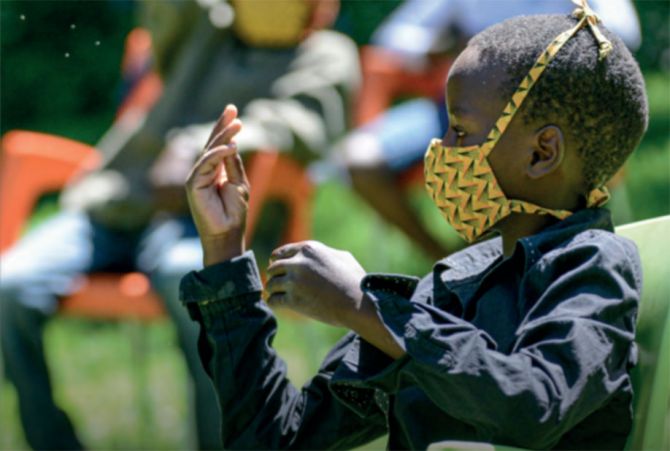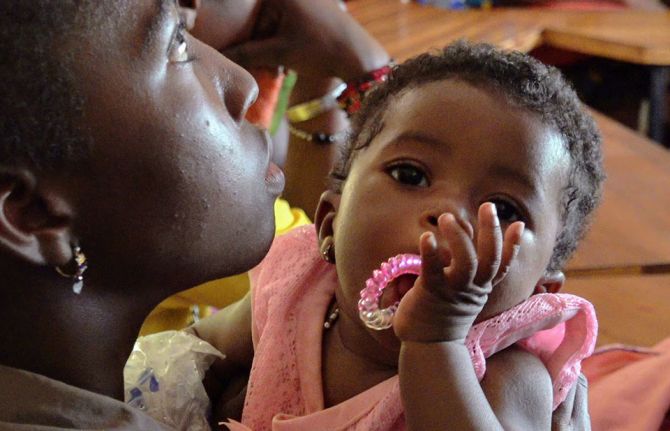
Feature Story
HIV response and the education sector: UNESCO Best practice series
04 мая 2009
04 мая 2009 04 мая 2009 The five booklets in UNESCO’s Good Policy and Practice in HIV & AIDS and Education aim to help education sectors in developing countries mount an effective response to HIV.
The five booklets in UNESCO’s Good Policy and Practice in HIV & AIDS and Education aim to help education sectors in developing countries mount an effective response to HIV.The negative impact of HIV is felt on education systems and schools, learners and teachers around the world from children dropping out of school to care for sick parents to the loss of teachers in their most productive years. As part of efforts to support governments, donors, NGOs, education planners and managers, school governing bodies and teachers in dealing with the implications of the epidemic and to share knowledge on effective responses, UNESCO has developed a best practice series entitled Good Policy and Practice in HIV & AIDS and Education.
The booklets in the series are broad in scope and highlight issues and lessons learned in a range of settings in developing countries. They examine policies, programmes and activities by a variety of actors and draw lessons from case studies and a review of both published and unpublished literature.
 Credit: Copyright 2003 Harvey Nelson, Courtesy of Photoshare.
Credit: Copyright 2003 Harvey Nelson, Courtesy of Photoshare.Out-of-school learners are also a focus of the series. For example, in Zambia, an interactive radio programme which provides access to education in an informal setting, for children who are unable to attend school is featured. Produced by the Ministry of Education Broadcasting Services Department, the weekday shows integrate life skills and HIV prevention into lessons on literacy, mathematics and other subjects. Drama, songs and participatory activities are used to introduce the lessons. The project, operating in 450 sites, covers 180,000 children, most of them orphans, and almost 50% of them girls.
UNESCO hopes that a best practice in one educational institution, ministry, country or region can be adapted and used effectively elsewhere.
The first booklet provides an overview and examines policy and programme responses. It also focuses on the need for more data and research around education sector responses to the AIDS epidemic.
The second has learners at its centre: their rights to education, protection, knowledge and skills, and care and support. One aspect examined is the exploration of successful prevention programmes for young people. In Namibia, for instance, the My Future is My Choice project has operated for over 10 years promoting AIDS prevention in schools. It aims to protect young people from HIV and other sexually transmitted infections, unwanted pregnancies and alcohol and drug abuse, by encouraging them to think for themselves and take responsibility for their future and their own development.
 Credit: Copyright 2005 Netsanet Assaye, Courtesy of Photshare
Credit: Copyright 2005 Netsanet Assaye, Courtesy of PhotshareIn booklet three, attention is turned towards educators and their role. It discusses their needs for training, care and support and the importance of their conduct in ensuring safe and secure learning environments. The fourth concentrates on the importance of strategic partnerships at multiple levels (i.e. global, regional, and within countries), of involving people living with HIV, and of working with children and young people. The fifth and final booklet in the series explores effective learning and quality education. It summarizes factors contributing to effective learning in the context of AIDS education and highlights issues to consider in developing and adapting relevant learning materials.
For UNESCO, Good Policy and Practice in HIV & AIDS and Education is a ‘living’ resource which will be expanded and refined as new knowledge and strategies become available. This series is considered a tool, a stepping stone, to support the education sector’s full engagement in national responses to the AIDS epidemic.
Right Hand Content
Good Policy and Practice in HIV & AIDS and Education:
Booklet 1: Overview
Booklet 2: HIV & AIDS and Safe, Secure and Supportive Learning Environments
Booklet 3: HIV & AIDS and Educator Development, Conduct and Support
Booklet 4: Partnerships in Practice
Booklet 5: Effective Learning
Cosponsors:
Feature stories:
Supporting young learners living with HIV in Namibia and Tanzania (23 December 2008)
ICASA 2008: Courage and hope, African teachers living positively (03 December 2008)
Publications:
Toolkit for Mainstreaming HIV and AIDS in the Education Sector: Guidelines for Development Cooperation Agencies. (UNAIDS IATT on Education, 2008)
( En | Fr | Es ) (pdf, 1Mb | 904 Kb | 1 Mb)
Improving the education response to HIV and AIDS: Lessons of partner efforts in coordination, harmonisation, alignment, information sharing and monitoring in Jamaica, Kenya, Thailand and Zambia. (UNAIDS IATT on Education, 2008) (pdf, 791 Kb.)
Advocacy Briefing Notes – Girls’ Education and HIV Prevention. (UNAIDS IATT on Education, 2008) (pdf, 253 Kb.)
Advocacy Briefing Notes – HIV and AIDS Education in Emergencies. (UNAIDS IATT on Education, 2008) (pdf, 275 Kb.)
Advocacy Briefing Notes – Mainstreaming HIV in Education. (UNAIDS IATT on Education, 2008) (pdf, 277 Kb.)
Advocacy Briefing Notes – Teachers Living with HIV and AIDS. (UNAIDS IATT on Education, 2008) (pdf, 273 Kb.)



